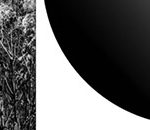Humans have been creating portraits of one another since the beginning of time, when rocks served as canvas and paints were made from charcoal and animal fat. Throughout history, portraits have been used to document appearances, but photography has drastically changed the medium, opening up new opportunities in expression and exploration. Watch this video to find out how four skilled portrait photographers conceptualize their work as art, and why:
Matt Hoyle, an award-winning celebrity portrait photographer, conveys perfection and beauty in his portraits to demonstrate why we worship celebrities, just like the ancient Egyptians worshiped their gods and deified them in sculptures and hieroglyphics. However, Hoyle will be the first one to admit that the philosophy of portraiture has expanded to deify “everyday folk” as well.
“We’re drawn to portraits because they’re human beings and we’re human beings,” Hoyle said. “What I look for is something you can relate to.”
For Bex Finch, each portrait tells a story, even when subjects can’t tell the stories for themselves. “A face can say so much,” she said. Finch is the professional photographer behind “The Sleepwalker” project—a series of portraits of Finch’s father, which document his physical and mental decline due to Alzheimer’s, and a series of self-portraits of Finch as she tries to empathize with his disconnectedness.
“A face can say so much,” Finch said. “I think a compelling portrait makes someone think, makes someone think about the person, about what they’re thinking about.”
Jamie Diamond’s photos are social experiments that invert what we know, such as the family portrait, into “those really unnatural, awkward moments” that feel wrong but serve as “masks behind the smiles,” pulling viewers into a deeper sphere of meaning. Diamond’s photographs may appear to be simple documentation, but each photo has been carefully constructed to challenge viewers’ preconceived notions about her subjects.
“We bring our own projections [and] our own assumptions to each portrait,” said Diamond. “It’s because of how close we are to the medium and how we understand the medium, because it’s such a part of our everyday lives.”
For Ethan Levitas, portraiture is all about collaboration. This photographer does whatever it takes to involve his subject in the process of creating portraits, even if that means handing them the shutter release remote. Levitas doesn’t try to impose ideas onto his subjects; instead, he gives his subjects “power” over their own images, space to self-reflect.
“It’s full of improvisation and intuition and surprise,” Levitas said. “We are part of creating what we perceive, and in the case of the portrait, [making] us see this person anew.”
Like This Article?
Don't Miss The Next One!
Join over 100,000 photographers of all experience levels who receive our free photography tips and articles to stay current:










Very nice video.
That is really cool. I think shooting uncommon facile expressions is a great way to gain attention for your photography!
We relate to the people in the picture. (It’s great for marketing to).
That was super interesting history. Thanks for sharing.
I always enjoy reading your stuff.